Lumber
Tropical Lumber
Known alternatively as exotic wood, tropical lumber is a favored lumber variety hailing from the warm, tropical regions across the globe. This timber category is primarily harvested from the forests spanning three key continents: Africa, Asia, and South America.
Chosen frequently for a myriad of indoor and outdoor endeavors, tropical lumber is prized for its durability, quality, and visually pleasing appearance. It comes in an array of textures and shades, ranging from rich oranges to deep, velvety browns.
Abou Dikro :
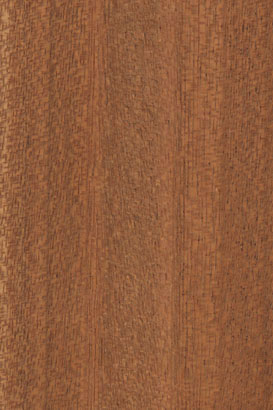
- Kind:
- Lumber
- Category:
- Hard wood
- Scientific Name:
- Entandrophragma cylindricum
- Common Names:
- Aboudikro (Ivory Coast), Sapelli (Cameroon)
- Distribution:
- Ranging from the Ivory Coast to the Cameroons and eastward through Zaire to Uganda. Occurs in evergreen, deciduous, and transitional forest formation.
- Average Density:
- 0.69
- General Characteristics:
- Heartwood a medium to fairly dark reddish brown or purplish brown; sapwood whitish or pale yellow, distinct. Texture rather fine; grain interlocked, sometimes wavy, producing a narrow, uniform, roe figure on quartered surfaces; lustrous; without a distinctive taste but with a cedarlike scent.
- Work Properties:
- Works fairly well with hand and machine tools, tends to tear interlocked grain in planing, saws easily, finishes well, good gluing and nailing properties, satisfactory peeling and slicing.
- Durability:
- Heartwood is moderately durable , resistant to termite attack variables. Sapwood liable to powder-post beetle attack.
- Usage:
- Furniture and cabinet work, decorative veneers, plywood, joinery, flooring, paneling.
- Zone:
- Tropical
Acajou :
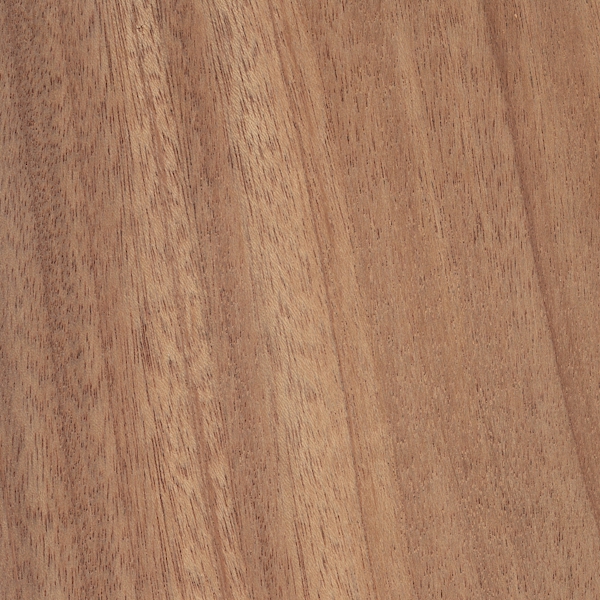
- Kind:
- Lumber
- Category:
- Hard wood
- Scientific Name:
- Khaya ivorensis , Khaya anthotheca, & Khaya grandifolia
- Common Names:
- African Mahogany Acajou de Bassam (Khaya ivorensis), Acajou Blanc (Khaya anthotheca), Acajou Grandes Feuilles (Khaya grandifolia)
- Distribution:
- Sierra Leone and Liberia to Gabon. K. anthotheca then extends eastward to Uganda and inhabits lower rainfall regions than K. ivorensis.
- Average Density:
- 0.57
- General Characteristics:
- Heartwood light pinkish brown darkening upon exposure to reddish brown; sapwood whitish or yellowish, not always sharply demarcated. Texture medium to coarse; grain straight to interlocked, producing a stripe figure; lustrous. Brittleheart present in some logs. Dust from K. anthotheca may be a skin irritant.
- Work Properties:
- Rather variable, tends to woolliness and torn grain, sharp thin edge cutters are suggested, a cutting angle of 20 degrees in planing is recommended. Nailing and gluing properties are good, an excellent finish is readily obtainable. Easy to slice and peel.
- Durability:
- Heartwood is rated as moderately durable, prone to buprestid and termite attack. Sapwood is liable to powder-post beetle attack.
- Usage:
- Furniture and cabinetwood, boatbuilding, joinery, veneer and plywood, paneling, shop fixtures.
- Zone:
- Tropical
Afromosia :

- Kind:
- Lumber
- Category:
- Hard wood
- Scientific Name:
- Pericopsis elata syn. Afrormosia elata
- Common Names:
- Kokrodua (Ghana), Assamela (Ivory Coast).
- Distribution:
- West Africa, but mainly Ghana and the Ivory Coast, gregarious, grows in both wet and dry areas.
- Average Density:
- 0.74
- General Characteristics:
- Heartwood yellow turning to a dark brown on exposure sapwood narrow, lighter in color and clearly demarcated. Texture moderately fine; grain straight to interlocked; some resemblance to teak.
- Work Properties:
- Works well with hand and machine tools, finishes cleanly, turns satisfactorily, good gluing, moderate steam-bending properties. Sawdust reported to be an eye irritant, good ventilation needed.
- Durability:
- Heartwood is rated as very durable and highly resistant to termite attack. Dark stains are liable to appear if in contact with iron under damp conditions.
- Usage:
- Boatbuilding, joinery, flooring, furniture, decorative veneers, considered an excellent teak substitute.
- Zone:
- Tropical
Ako :
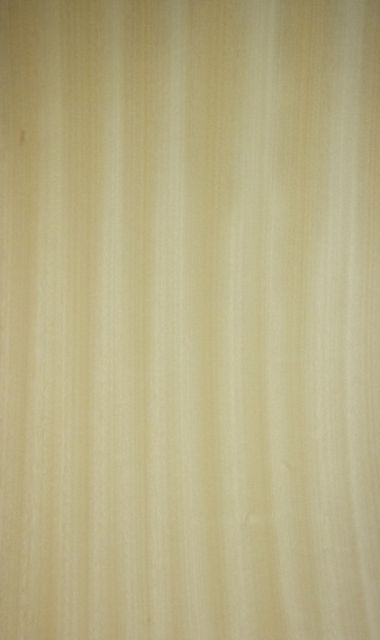
- Kind:
- Lumber
- Category:
- Hard wood
- Scientific Name:
- Antiaris africana
- Common Names:
- Ako, Andoum, Antiaris, Bonkonko, Chenchen, Diolosso, Kirundu, Kyenkyen, Ogiovu, Oro.
- Distribution:
- The genus Antiaris is reported to consist of a few tree species with a growth range in the Indo-Malayan region and tropical Africa. A. africana is reported to grow in the lowland rain forests and outlier forests in savannah regions from Senegal to Zaire, Sudan, and Uganda. It is reported to be very tolerant of different site conditions.
- Average Density:
- 0.43
- General Characteristics:
- The sapwood is not clearly defined from the heartwood The heartwood varies in color from cream to yellowish-brown or yellowish-gray.The grain may be straight to interlocked, but is typically moderately interlocked. Annual rings are usually not discernible since the tree is reported to grow evenly all year round. The wood has a moderately coarse texture. Pores are reported to appear as coarse vessel lines on longitudinal surfaces.
- Work Properties:
- The timber is reported to be saw without difficulty. The wood has a slight blunting effect on cutting tools. Planning requires a cutting angle of 20 degrees to prevent interlocked grain from tearing out. The wood is fairly difficult to bore because of interlocked grain and soft fibrous tissue. It should be adequately supported to prevent break-out at tool exits. The wood is fairly difficult to mortise because of interlocked grain. Adequate support is required to prevent break-out at tool exits. The timber is reported to have very little or slight tendency to splinter. The wood has good gluing properties. The wood is reported to have satisfactory varnishing qualities. Screwing properties are reported to be satisfactory. The wood is reported to polish well. The wood stains satisfactorily. The wood is reported to have satisfactory nailing properties. The wood accepts paint satisfactorily. The wood has very poor steam bending properties. This species can be worked fairly easily with hand tools. Cutting edges should be kept very sharp to prevent the wood from crumbling.
- Durability:
- The timber is reported to have very little resistance to decay, and is susceptible to attack by the powder-post beetle (Bostrichydae and Lyctidae)and the ambrosia beetle, i.e., pinhole borers (Scolytidae and Platypodidae). Logs are very susceptible to sap-stain and should be extracted and processed rapidly after harvesting. Resistance to Impregnation The heartwood is reported to be easy to treat using either the open tank or pressure system.
- Usage:
- Boxes and crates, Building construction, Construction, Core Stock, Decorative veneer, Furniture , Furniture components, Joinery, Light construction, Packing cases, Paneling , Plywood, Veneer.
- Zone:
- Tropical
Amarante :
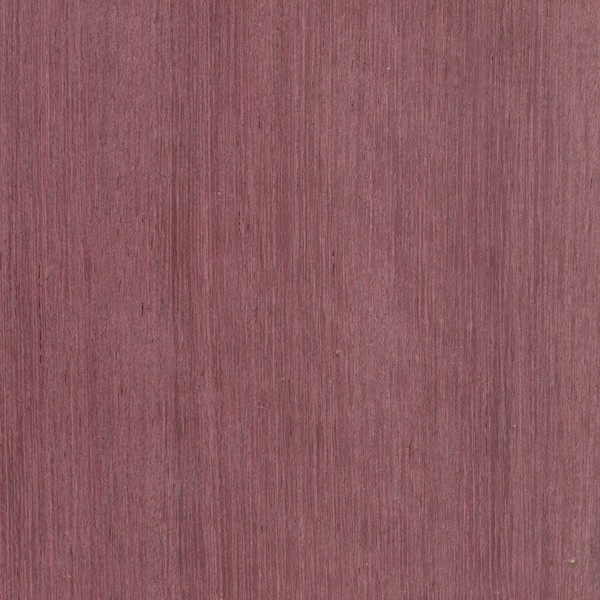
- Kind:
- Lumber
- Category:
- Hard wood
- Scientific Name:
- Peltogyne spp.
- Common Names:
- Purpleheart , Pau Roxo.
- Distribution:
- Center of distribution in the north-middle part of the Brazilian Amazon region; combined range of all species from Mexico through Central America and southward to southern Brazil.
- Average Density:
- 0.87
- General Characteristics:
- Heartwood brown when freshly cut becomes deep purple upon exposure, eventually turning to a dark brown sharply demarcated from the off-white sapwood. Texture medium to fine; luster medium to high, variable; grain usually straight, sometimes wavy, roey, or irregular; without distinctive odor or taste.
- Work Properties:
- Moderately difficult to work with either hand or machine tools, dull cutters exude a gummy resin when heated by dull tools; slow feed rates and specially hardened cutters are suggested. Turns smoothly, easy to glue, and finishes well.
- Durability:
- Heartwood is rated as highly durable in resistance to attack by decay fungi; very resistant to dry-wood termites; but little resistance to marine borers.
- Usage:
- Turnery, marquetry, cabinets, fine furniture, parquet flooring, tool handles, heavy construction, shipbuilding, many specialty items (billiard cue butts, chemical vats, carving).
- Zone:
- Tropical
Amazakoue :

- Kind:
- Lumber
- Category:
- Hard wood
- Scientific Name:
- Guibourtia ehie.
- Common Names:
- Ovangkol ,Amazakoue (Ivory Coast). Hyeduanini, Anoky?( Congo )
- Distribution:
- Ivory Coast, Ghana, Southern Nigeria, and Gabon. Prefers closed rain forests and transitional forests, often in small groups.
- Average Density:
- 0.82
- General Characteristics:
- Heartwood yellow brown to dark brown with gray to almost black stripes; sapwood yellow white, about 4 in. wide, clearly demarcated. Texture moderately coarse; grain straight to interlocked; attractive figure; unpleasant odor when freshly cut.
- Work Properties:
- Saws slowly but well for its density, works fairly easily with hand and machine tools, planes to a good finish, must be heated before slicing into veneers. May stain when in contact with metal.
- Durability:
- Heartwood moderately durable, rarely attacked by termites.
- Usage:
- Fine furniture and cabinet work, turnery, decorative veneers, flooring. A walnutlike wood. Yields a gum copal used in pharmaceuticals and as a base for varnishes.
- Zone:
- Tropical
Aniegre:
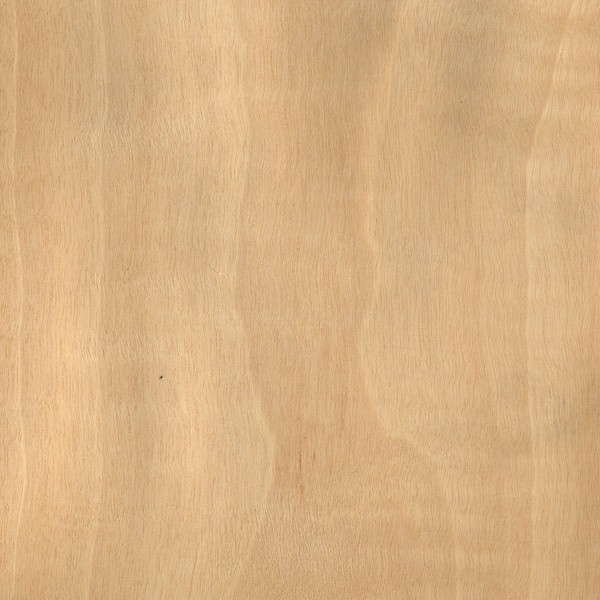
- Kind:
- Lumber
- Category:
- Hard wood
- Scientific Name:
- Aningeria spp.
- Common Names:
- Aniegre(Cameroun)
- Distribution:
- The genus is widespread in tropical Africa, particularly common in parts of East Africa.
- Average Density:
- 0.57
- General Characteristics:
- Heartwood yellowish white, pale brown, or pinkish brown, darkening slightly after exposure; sapwood not well demarcated. Texture medium to coarse; grain usually straight, sometimes wavy; lustrous; faint cedarlike odor.
- Work Properties:
- Generally reported to saw and machine well, but some species are siliceous and have a blunting effect on cutters; rather difficult to finish; cuts well on rotary lathe or slicer.
- Durability:
- The wood is perishable, little resistance to attack by decay fungi and termites, liable to blue stain.
- Usage:
- General carpentry, joinery, veneer and plywood, furniture components.
- Zone:
- Tropical
Apa:
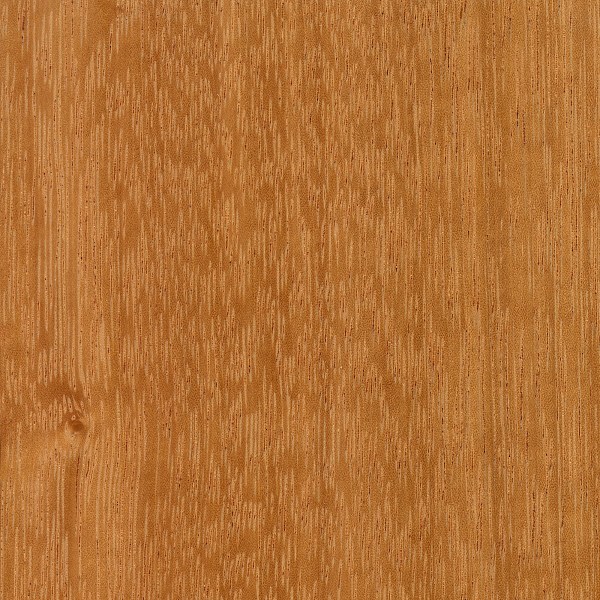
- Kind:
- Lumber
- Category:
- Hard wood
- Scientific Name:
- Afzelia spp.
- Common Names:
- Doussie (Cameroun), Apa(Ghana) , Lingu?(Mozambique)
- Distribution:
- West, Central, and East Africa. Occur in the dense evergreen forests but also common in the savanna and coastal forests of East Africa
- Average Density:
- 0.8
- General Characteristics:
- Heartwood reddish brown after exposure; sapwood pale straw to whitish, well defined. Texture moderate to coarse; grain straight to interlocked; medium luster; without characteristic odor or taste. Some pores contain a yellow dyestuff which, under moist conditions, can discolor textiles, paper, or other cellulosic materials.
- Work Properties:
- Rather difficult to saw and machine because of rapid dulling of saw teeth and cutters but works to a smooth finish; some tearing of grain on radial faces. Difficult to stain where pores contain yellow deposits. Classified moderate in wood bending properties. Dust may be irritating. Difficult to glue.
- Durability:
- Heartwood is rated as very durable and moderately resistant to termite attack; sapwood is liable to attack by powderpost beetles. In East African waters, teredo are slow to attack and develop. Pholad attack is more rapid.
- Usage:
- Exterior joinery (window frames, doors), flooring, heavy construction including harbor and dock work, furniture, because of good acid resistance used for vats and tanks.
- Zone:
- Tropical
Avodire :
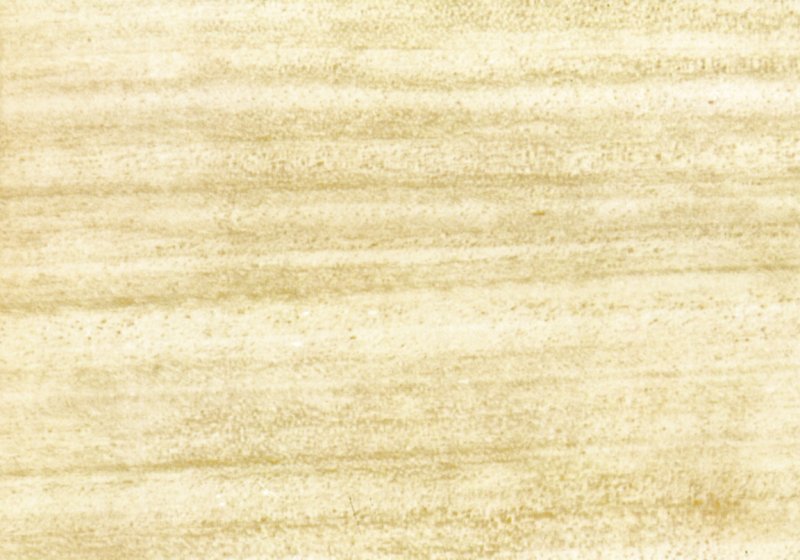
- Kind:
- Lumber
- Category:
- Hard wood
- Scientific Name:
- Turraeanthus africana Pellegr.
- Common Names:
- Apapaye (Ghana), Lusamba (Zaire), Apaya (Nigeria).
- Distribution:
- From Sierra Leone to the Congo region and Angola; most common in the eastern region of the Ivory Coast, scattered elsewhere. Found near streams and lakes.
- Average Density:
- 0.58
- General Characteristics:
- Heartwood creamy white to pale yellow, darkening to a gold yellow; sapwood not differentiated. Texture moderately fine, grain straight, wavy, or irregularly interlocked; high natural luster; has an attractive mottled figure if quartered.
- Work Properties:
- Timber saws are well and easy to work with hand and machine tools, planning a cutting angle of 15 to 20 degrees is suggested to avoid tearing of interlocked grain, good gluing and veneering properties. Dermatitis, nose bleeding, and other symptoms reported in woodworkers.
- Durability:
- Heartwood is nondurable; reported to be moderately resistant to nonresistant to termite attack.
- Usage:
- Furniture, fine joinery, decorative veneers, cabinetwork, paneling
- Zone:
- Tropical
Badi :
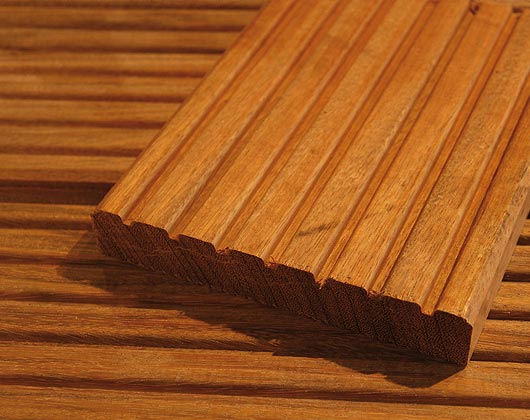
- Kind:
- Lumber
- Category:
- Hard wood
- Scientific Name:
- Nauclea diderichii (De Wild & Th. Dur.) Merr, syn. Sarcocephalus diderrichii.
- Common Names:
- Kusia (Ghana), Badi (Ivory Coast), Bilinga (Gabon).
- Distribution:
- Widely distributed from Sierra Leone to the Congo region and eastward to Uganda; often found in pure stands.
- Average Density:
- 0.76
- General Characteristics:
- Heartwood orange or golden yellow, darkening on exposure; sapwood whitish or pale yellow, clearly defined. Texture rather coarse; grain usually interlocked or irregular; lustrous; without characteristic odor or taste. An alkaloid in the wood may be toxic to woodworkers.
- Work Properties:
- Timber works moderately well with hand and machine tools, requires a slow feed in sawing, a 10-degree cutting angle is suggested for planning to prevent tearing; good gluing; takes a satisfactory finish. Poor steam- bending characteristics.
- Durability:
- Heartwood is rated as very durable but is moderately resistant to termites. Sapwood is liable to powder-post beetle attack. Heartwood resistant to marine borers.
- Usage:
- Dock and marine work, boatbuilding (except bent work), railway crossties, general construction, flooring, furniture and cabinet parts.
- Zone:
- Tropical
Berlinia :
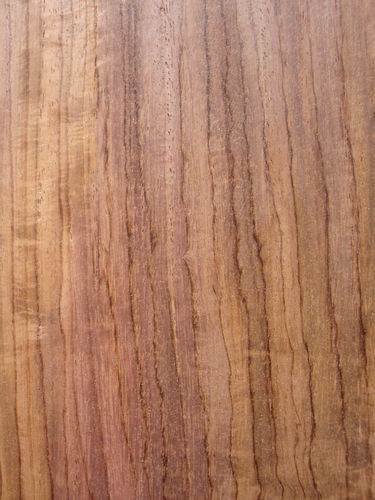
- Kind:
- Lumber
- Category:
- Hard wood
- Scientific Name:
- Berlinia bracteosa Benth.
- Common Names:
- Ebiara (Cameroun), Pocouli ( Angola)
- Distribution:
- West Africa and reaching into Zaire. Found in various forest types: savanna formations, marshy localities, or dense high forests.
- Average Density:
- 0.7
- General Characteristics:
- Heartwood brown, pinkish brown to deep red brown, with dark purple or brown streaking; sapwood is rather wide, whitish, often with a pink tint, clearly demarcated. Texture medium to coarse; grain straight, interlocked, or irregular; without characteristic odor or taste when dry. Traumatic gum ducts frequently present.
- Work Properties:
- Saws easily and generally work well with hand and machine tools but there is some tearing of interlocked grain; good gluing properties; rated as a moderate steam-bending wood.
- Durability:
- Heartwood durability variable with species, generally moderately resistant to attack by decay fungi and moderately resistant to termite attack. Logs liable to severe attack by ambrosia beetles and sapwood vulnerable to powder-post beetles.
- Usage:
- Heavy construction, furniture and cabinet work, decorative veneers, paneling. Often suggested as an oak substitute.
- Zone:
- Tropical
Bete:

- Kind:
- Lumber
- Category:
- Hard wood
- Scientific Name:
- Mansonia altissima A. Chev.
- Common Names:
- Bete (Ivory Coast)
- Distribution:
- Occurs in the deciduous forest type from ivory Coast to Cameroon.
- Average Density:
- 0.66
- General Characteristics:
- Heartwood yellow brown or dark gray brown, frequently with a purplish cast, often shows light and dark bands; sapwood whitish, sharply demarcated. Texture fine to medium; grain generally straight; luster low to medium. Resembles American black walnut. Lacks a distinct odor or taste.
- Work Properties:
- Works easily with hand and machine tools with little dulling of cutters, has good nailing and gluing properties, rated as a good steam-bending wood. Sawdust may cause nose and throat irritation.
- Durability:
- Heartwood is very durable and highly resistant to termite attack
- Usage:
- High quality cabinet and furniture work, joinery, turnery, decorative veneers Bark contains a cardiac poison of the digitalis group. Used as an alternative for walnuts.
- Zone:
- Tropical
Brazilian Teak :
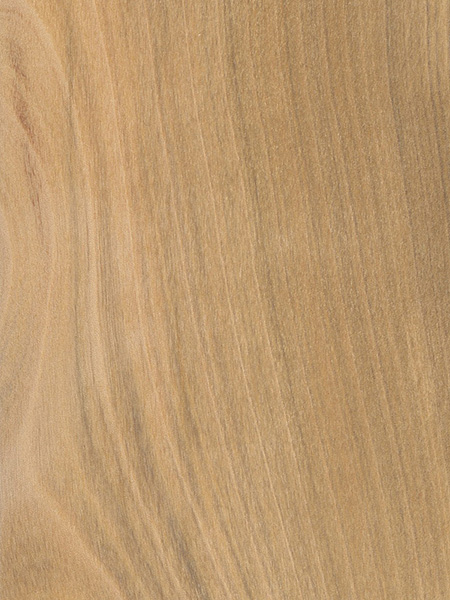
- Kind:
- Lumber
- Category:
- Hard wood
- Scientific Name:
- Cordia spp. (C. alliodora, C. goeldiana)
- Common Names:
- Brazilian Teak, Freijo, Laurel Blanco
- Distribution:
- From southern Mexico to Brazil
- Average Density:
- 565 kg/m3
- General Characteristics:
- Freijo is known by an abundance of common names, (such as Laurel Blanco), and is a relative of the more commonly-known Bocote and Ziricote. Its appearance.
- Work Properties:
- Easy to work with hand or machine tools. Glues, turns, and finishes well.
- Durability:
- Variable, generally depending on the darkness of the wood. Rated as durable, though lighter-colored boards are less durable. Mixed insect resistance.
- Usage:
- Veneer, furniture, turned objects, cabinetry, boatbuilding, and millwork.
- Zone:
- Tropical
Bubinga :

- Kind:
- Lumber
- Category:
- Hard wood
- Scientific Name:
- Guibourtia demeusei J. L?onard
- Common Names:
- Essingang (Cameroon), Ovang, Kevazingo (Gabon), Waka (Zaire).
- Distribution:
- The species in this group are found in Equatorial Africa from Southeast Nigeria, through Cameroon and Gabon to the Congo region. Occur in swampy or periodically inundated forests, also near river or lakeshores.
- Average Density:
- 0.92
- General Characteristics:
- Heartwood pink, vivid red, or red brown with purple streaks or veins, on exposure becomes yellow or medium brown with a reddish tint, veining becomes less conspicuous; sapwood whitish and clearly demarcated. Texture fine and even; grain straight or interlocked; lustrous; sometimes highly figured; has an unpleasant odor when first cut which disappears on drying.
- Work Properties:
- Though quite hard and heavy the species work, saw, and plane rather well and produce a good finish, glues well, and good wood for turnings.
- Durability:
- Heartwood has good durability and is resistant to termite attack. Moderately resistant to marine borers.
- Usage:
- Some resemblance to rosewood. Fine furniture and cabinet work, decorative veneers, fancy turnery, inlay work.
- Zone:
- Tropical
Burmese Teak :
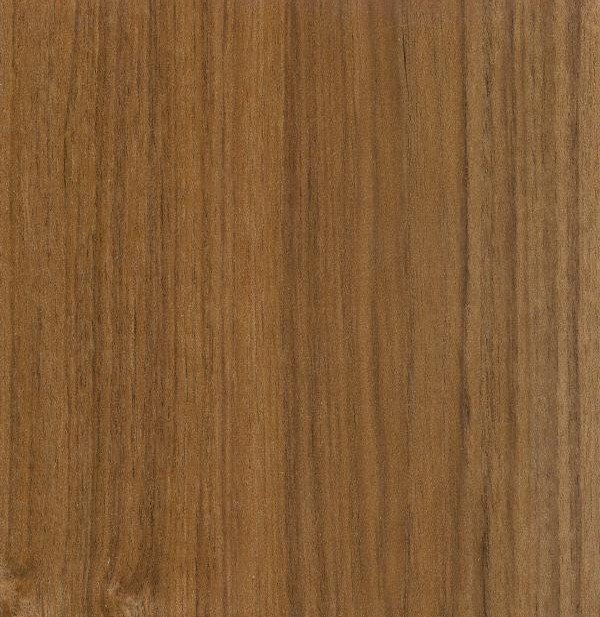
- Kind:
- Lumber
- Category:
- Hard wood
- Scientific Name:
- Tectona grandis
- Common Names:
- Kyun (Burma), Teck (French), Teca (Spanish).
- Distribution:
- Native to India, Burma(Myanmar), Thailand, Indochina, including Indonesia, particularly Java. Extensively cultivated in plantations within its natural range as well as in tropical areas of Africa and Latin America.
- Average Density:
- 690KG
- General Characteristics:
- Heartwood dark golden yellow, turning a dark brown with exposure, often very variable in color when freshly machined showing blotches and streaks of various shades; sapwood pale yellowish, sharply demarcated. Grain straight, sometimes wavy; texture coarse, uneven (ring porous); dull with an oily feel; scented when freshly cut. Dust may cause skin irritations. Silica content variable, up to 1.4% is reported.
- Work Properties:
- Easily worked with both hand and machine tools and dresses to a very smooth finish if tools are kept sharp; glues moderately well despite its oily nature. Blunting of cutters can be rather severe. As noted, it may cause dermatitis in some individuals.
- Durability:
- Heartwood is rated as very durable with respect to decay fungi and termites; not immune to marine borers.
- Usage:
- Shipbuilding, joinery, furniture, flooring, carving, cabinetwork, paneling, turnery, tanks and vats, fixtures requiring high resistance to acids.
- Zone:
- Tropical
Celtis :

- Kind:
- Lumber
- Category:
- Hard wood
- Scientific Name:
- Celtis adolfi-friderici Engl.
- Common Names:
- Esa (Ghana).
- Distribution:
- Trees are found in western, central, and parts of eastern Africa; locally frequent in the drier high forests.
- Average Density:
- 0.72
- General Characteristics:
- Heartwood and sapwood not clearly demarcated, whitish or light yellow, becoming grayish white on exposure often with dark irregular markings. Texture rather fine to coarse; grain straight to irregular, wavy, or interlocked; lustrous; has an apple-like scent in C. africana.
- Work Properties:
- Generally reported easy to work in machining operations but rather difficult with hand tools; tearing of interlocked grain in planning, poor surfaces in shaping; nails and glues easily; moderate steam-bending qualities.
- Durability:
- Highly susceptible to attack by decay and staining fungi as well as insect damage, including powder-post beetle attack.
- Usage:
- Flooring, tool handles, plywood, general construction, decorative veneer.
- Zone:
- Tropical
Dabema :
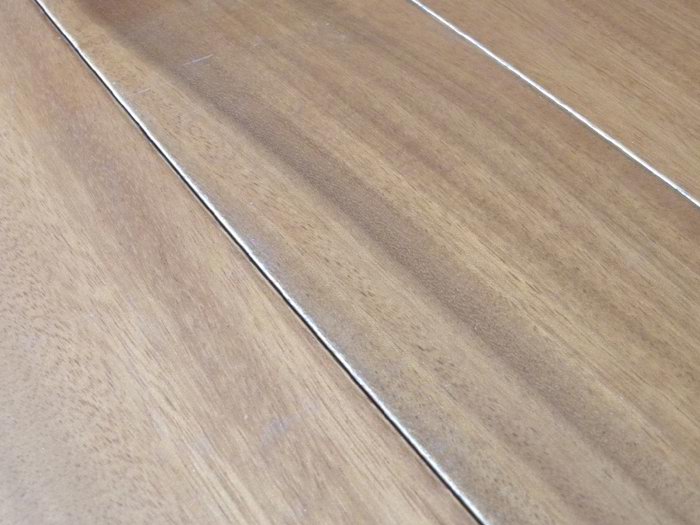
- Kind:
- Lumber
- Category:
- Hard wood
- Scientific Name:
- Piptadeniastrum africanum Brenan.
- Common Names:
- Dabema (Ivory Coast), Dahoma (Ghana).
- Distribution:
- Tropical West Africa from Senegal to Angola and across the Congo region to Uganda. Found in mixed deciduous and evergreen forests, it often stands as a single tree on farmland.
- Average Density:
- 0.7
- General Characteristics:
- Heartwood light to golden brown; sapwood 2-in. wide, grayish to pale straw, distinct. Texture coarse; grain broadly interlocked producing an attractive ribbon figure; moderate luster; unpleasant odor when freshly cut and may return if timber is rewetted; sawdust may irritate skin and mucous membranes; may stain if in contact with iron under moist conditions.
- Work Properties:
- Works well, blunting of tooth edges most pronounced in sawing, cutting angle of 15 degrees is suggested for planing knives to minimize tearing of interlocked grain, nailing and gluing satisfactory, moderate wood- bending characteristics.
- Durability:
- Heartwood is rated as durable, reported to be resistant to termite attack in West Africa but only moderately so in South Africa.
- Usage:
- Heavy construction, wharf decking, flooring.
- Zone:
- Tropical
Denya :
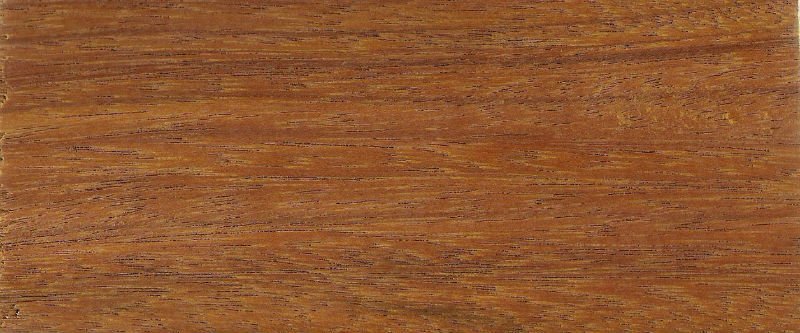
- Kind:
- Lumber
- Category:
- Hard wood
- Scientific Name:
- Cylicodiscus gabonensis (Harms) Rob.
- Common Names:
- Denya (Ghana), Okan( Africa)
- Distribution:
- Common in the rain forests of Sierra Leone to the Cameroons and Gabon.
- Average Density:
- 0.91
- General Characteristics:
- Heartwood yellow to golden brown, often with a slight greenish tinge, darkening on exposure to a reddish brown; sapwood 2 to 3 in. wide, pale pink, distinct. Texture moderately coarse, grain interlocked; lustrous; disagreeable odor when freshly cut, but without odor or taste when dry.
- Work Properties:
- Rather difficult to see with some dulling, difficult to work with hand and machine tools, tearing of interlocked grain in planing, turns well, glues and finishes well.
- Durability:
- Heartwood is very durable and highly resistant to termite attack; sapwood is liable to powder-post beetle attack. Resistant to marine borers, excellent weathering properties, and has high resistance to wear.
- Usage:
- Marine piling and dockwork, heavy-duty flooring, railroad crossties, heavy construction.
- Zone:
- Tropical
Dibetou :
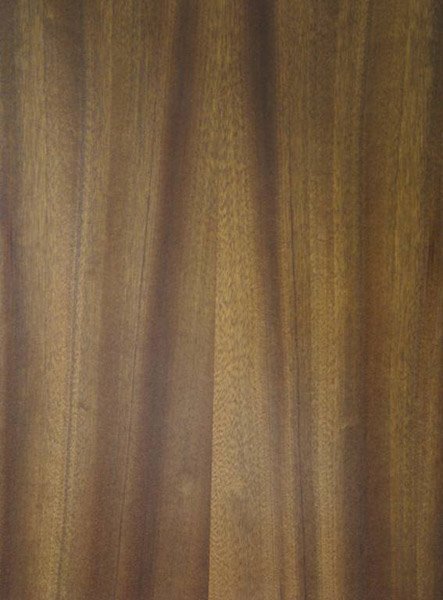
- Kind:
- Lumber
- Category:
- Hard wood
- Scientific Name:
- Lovoa trichilioides ,syn. L. klaineana.
- Common Names:
- African Walnut, Bibolo, Lovoa, Dibetou (Gabon, Ivory Coast), Congowood, Tigerwood (United States).
- Distribution:
- West Tropical Africa from Sierra Leone to Gabon occurs in evergreen and deciduous forests, preferring moist sites, and tends to be gregarious.
- Average Density:
- 0.53
- General Characteristics:
- Heartwood yellowish brown, sometimes marked with dark streaks or veins; sapwood buff or light gray, narrow, clearly demarcated. Texture fine to medium; grain usually interlocked with an attractive ribbon figure; lustrous cedarlike scent.
- Work Properties:
- Easy to work but sharp tools are required to avoid tearing, particularly when machining quartersawn faces. Good gluing properties, moderate steam-bending properties.
- Durability:
- Heartwood is rated as moderately durable, liable to dry-wood termite attack. Sapwood is liable to powder-post beetle attack.
- Usage:
- Furniture and cabinet work, decorative veneers, paneling, joinery, shop fixtures, gunstocks.
- Zone:
- Tropical
Difou :
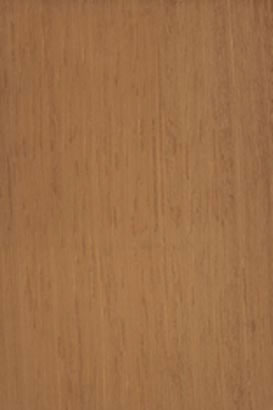
- Kind:
- Lumber
- Category:
- Hard wood
- Scientific Name:
- Morus mesozygia Stapf.
- Common Names:
- Wonton (Ghana), Aye (Nigeria), Kankate (Zaire).
- Distribution:
- Found on the edge of the humid rain forests from Senegal to Cameroon and Gabon; also in dry savanna formations. Widely planted as a shade and farm boundary tree.
- Average Density:
- 0.84
- General Characteristics:
- Heartwood yellow when freshly cut darkening on exposure to a golden- or coffee brown; sapwood wide, grayish white, distinct. Texture fine to moderately coarse; grain shallowly interlocked; moderately high luster.
- Work Properties:
- Works with moderate ease with most hand and machine tools, good sawing characteristics; glues well; takes a good finish; veneers well.
- Durability:
- Heartwood vulnerable to attack by decay fungi and liable to termite attack.
- Usage:
- Joinery, turnery, flooring, veneer.
- Zone:
- Tropical
Ebony :
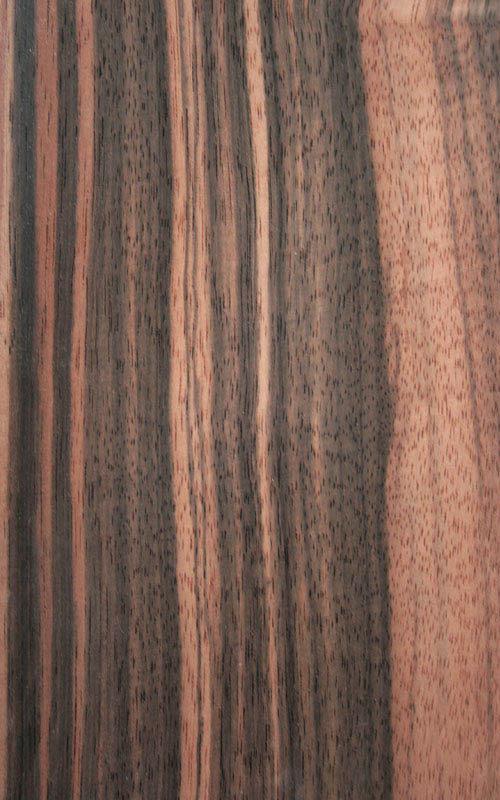
- Kind:
- Lumber
- Category:
- Hard wood
- Scientific Name:
- Diospyros crassiflora Hiern.
- Common Names:
- Eb?ne
- Distribution:
- Commercial supplies are mostly from Equatorial West Africa. Forms almost pure groups near riverbanks.
- Average Density:
- 0.83
- General Characteristics:
- Heartwood uniform jet black or black brown or streaked; sapwood pink colored when freshly cut, darkening to a pale red brown, very variable in width. Texture very fine; grain straight to slightly interlocked or somewhat curly. Sawdust may cause dermatitis.
- Work Properties:
- Heartwood is difficult to work with hand and machine tools, has a pronounced dulling effect on tool edges, may pick up in planing if grain is irregular, and takes an excellent polish. Good steam-bending properties.
- Durability:
- Heartwood rated as very durable, moderately to highly resistant to termite attack.
- Usage:
- Parts of musical instruments, handles for cutlery and tools, brush backs, carvings, turnery, inlaid work.
- Zone:
- Tropical
Ekki :
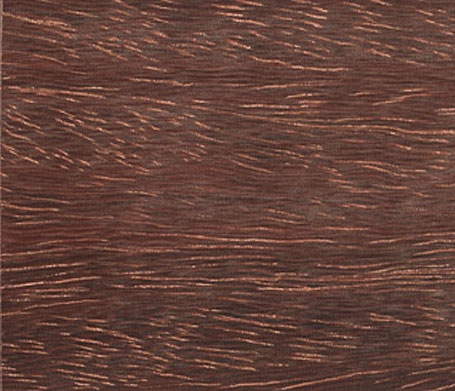
- Kind:
- Lumber
- Category:
- Hard wood
- Scientific Name:
- Lophira alata Banks ex Gaertn.f
- Common Names:
- Azob?, Bongossi, Bakundu (Cameroon), Kaku (Ghana), Esore (Ivory Coast), Aba (Nigeria), Endwi (Sierra Leone).
- Distribution:
- West Africa and extending into the Congo Basin; occurs in evergreen and moist deciduous forests, in freshwater swamp forests, and close to riverbanks.
- Average Density:
- 1.06
- General Characteristics:
- Heartwood dark red, chocolate brown, or purple brown with conspicuous white deposits in the vessels; sapwood up to 2 in. wide, pale pink, well defined. Texture coarse; grain usually interlocked; luster low; without characteristic odor or taste.
- Work Properties:
- Very difficult to work with hand and machine tools; severe blunting effect if machined when dry; can be dressed to a smooth finish; gluing properties usually good.
- Durability:
- Heartwood is rated as very durable but only moderately resistant to termite attack. Resistant to acids. Good weathering properties. Resistant to Teredo attack.
- Usage:
- Heavy durable construction work, harbor work, heavy-duty flooring, parquet flooring, railroad crossties.
- Zone:
- Tropical
Emeri :

- Kind:
- Lumber
- Category:
- Hard wood
- Scientific Name:
- Terminalia ivorensis A. Chev.
- Common Names:
- Black Afara, Idigbo (Nigeria), Emeri (Ghana), Framire (Ivory Coast).
- Distribution:
- West tropical Africa from Guinea to Cameroon, abundant in primary and secondary forests and transition formations. A successful plantation species.
- Average Density:
- 0.5
- General Characteristics:
- Heartwood yellow brown or light pink brown; sapwood somewhat paler, not clearly demarcated. Texture medium to rather coarse; grain straight or slightly irregular; moderately lustrous; without distinctive odor or taste. Dust may irritate skin or respiratory tracts. Timber may stain in contact with iron. Yellow dye may stain damp fabrics.
- Work Properties:
- Easy to work with hand and machine tools, a 20 degree cutting angle is suggested to avoid tearing of grain in planing, turns well, good nailing and gluing properties, and takes a good finish.
- Durability:
- Heartwood is rated as durable and moderately resistant to termite attack sapwood liable to powder-post beetles.
- Usage:
- A good general purpose timber. Furniture components, joinery, decorative paneling, veneers, flooring, light construction.
- Zone:
- Tropical
Etimoe :
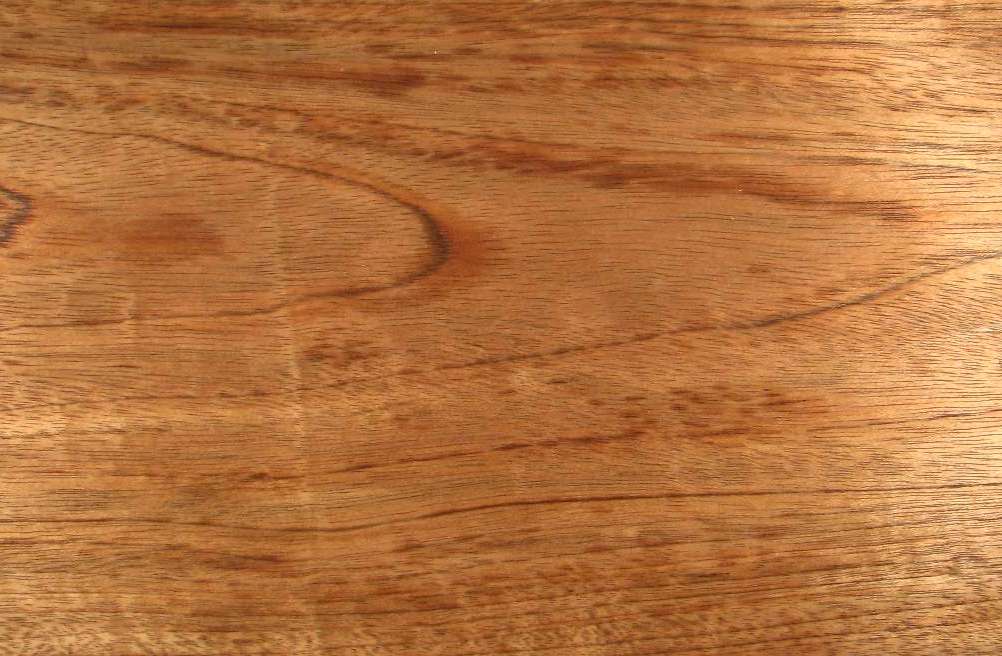
- Kind:
- Lumber
- Category:
- Hard wood
- Scientific Name:
- Copaifera salikounda
- Common Names:
- Andem-evine, Bangula, Bilombi, Bofele, Entendua, Gum Copal, Indimba, Kamalufu, N'kara, Ovbialeke, Salikunda
- Distribution:
- Central African Republic, Congo, Gabon, Ghana, Ivory Coast, Nigeria, Zaire
- Average Density:
- 0.75
- General Characteristics:
- The heartwood is reddish-brown to gray brown and features definite black to reddish veining or striping. Etimoe has a straight to interlocked grain, with a fine and even texture.
- Work Properties:
- The wood's natural resins have a tendency to exude during steam bending, which makes the wood only moderately rated for steam bending purposes. The same resins pose a small problem in working properties such as during cutting. Experts recommend a reduction of the cutting angle to 20 degrees when planing or moulding of quartered stock to avoid blunting of the cutting edges. Experts also caution that pre-boring of nail holes is necessary when nailing close to the edge of the wood to avoid splits. Etimoe, like rosewood, finishes beautifully. The wood glues well also.
- Durability:
- Moderately durable. The trees are subject to attack by powder post beetles. However, the trees do possess a very high natural resistance to decay, which is why etimoe is used for ship and boat building. Resistance t. Impregnation Heartwood is highly resistant.
- Usage:
- Fine furniture, cabinetry, flooring, ship and boat building, vehicle bodies, joinery, turnery, some heavy construction.
- Zone:
- Tropical
Frake :
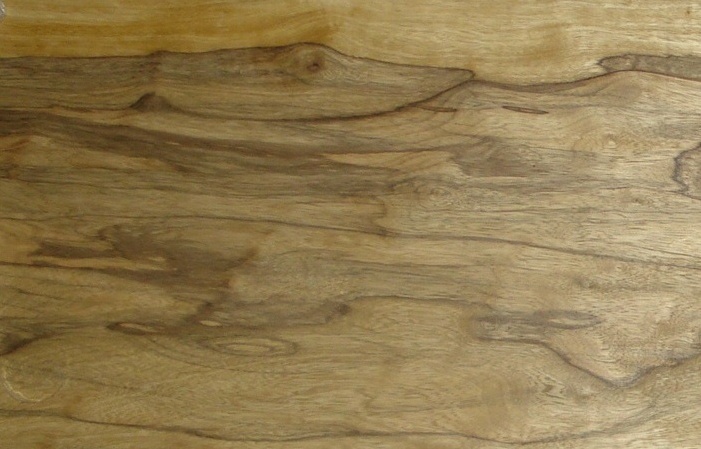
- Kind:
- Lumber
- Category:
- Hard wood
- Scientific Name:
- Terminalia superba Engl. & Diels
- Common Names:
- Ofram (Ghana), Frake (Ivory Coast), Afara (Nigeria), Akom (Cameroon), Limba (Zaire, Angola). "Korina" is a trade name in the United States.
- Distribution:
- Widely distributed from Sierra Leone to Angola and Zaire, it occurs in rain and savanna forests. A favored plantation species in West Africa.
- Average Density:
- 0.54
- General Characteristics:
- Heartwood yellow brown, sometimes with nearly black markings producing an attractive figure; sapwood not distinct from heartwood. Texture moderately coarse; grain straight to irregular or interlocked; slightly lustrous; mild odor. Dark colored figured wood is marketed separately as Dark Afara or Dark Limba. Splinters may cause skin inflammation.
- Work Properties:
- Saws easily, works well with hand and machine tools, good veneering properties, good gluing and nailing characteristics, and takes a good finish.
- Durability:
- Heartwood is nondurable, not resistant to termites, liable to severe ambrosia beetle and powder-post beetle attack.
- Usage:
- Plywood, furniture, interior joinery, sliced for decorative veneers.
- Zone:
- Tropical
Garapa :
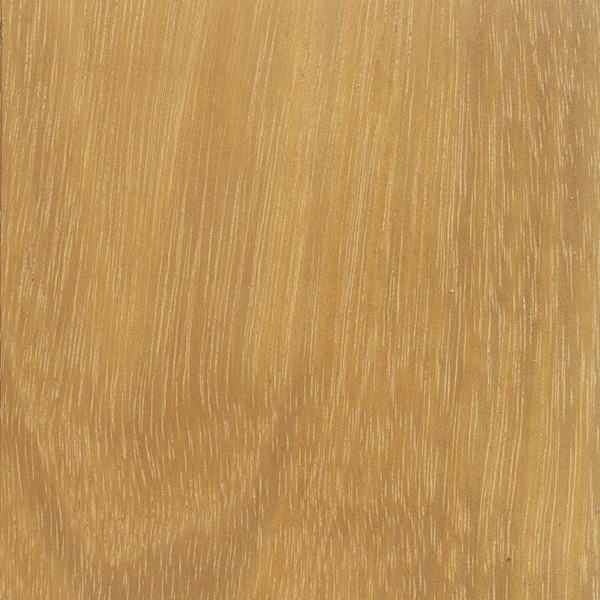
- Kind:
- Lumber
- Category:
- Hard wood
- Scientific Name:
- Apuleia leiocarpa Macbr.
- Common Names:
- Garapa
- Distribution:
- South America.
- Average Density:
- 0.83
- General Characteristics:
- Garapa has a golden to yellowish brown color, which darkens with age. The wood is fairly chatoyant, and appears to shift from dark to light coloring in different lighting angles. (This is evident in the scanned image of the sealed wood below, which only appears as patches of light/dark wood.)Garapa has a medium texture and small open pores. The grain is usually straight, but can also be interlocked.
- Work Properties:
- Garapa is fairly easy to work, considering it?s density. It glues and finishes well, and is about average for dimensional stability.
- Durability:
- Garapa is a naturally durable hardwood, though it is susceptible to insect attack.
- Usage:
- Garapa is occasionally exported from South America for use as flooring or exterior decking material. The wood is also used in docks and boatbuilding.
- Zone:
- Tropical
IPE :
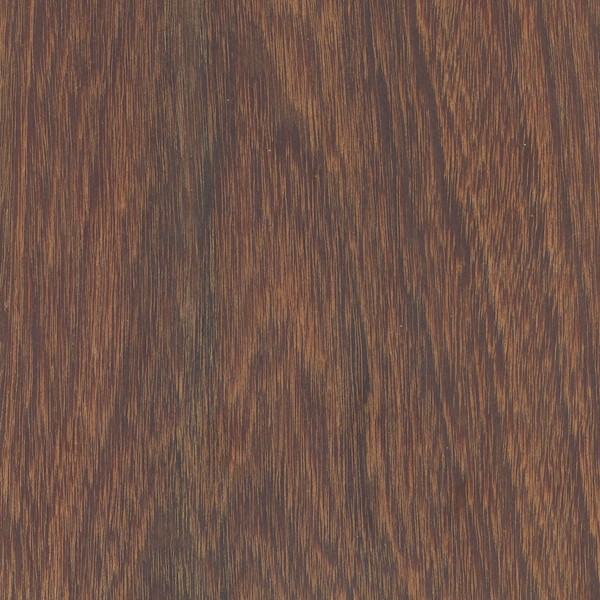
- Kind:
- Lumber
- Category:
- Hard wood
- Scientific Name:
- Tabebuia serratifolia Nichols
- Common Names:
- Ipe (Brazil), Lapacho negro (Paraguay, Argentina).
- Distribution:
- Throughout continental tropical America and some of the Lesser Antilles. The tree grows on a variety of sites, from ridge tops to riverbanks and marsh forests.
- Average Density:
- 1.04
- General Characteristics:
- Heartwood olive brown to blackish, often with lighter or darker striping, often covered with a yellow powder; sharply demarcated from the whitish or yellowish sapwood. Texture fine to medium; luster low to medium; grain straight to very irregular; rather oily looking; without distinctive odor or taste.
- Work Properties:
- Moderately difficult to work especially with hand tools; has a blunting effect on cutting edges, finishes smoothly except where grain is very roey The fine yellow dust produced in most operations may cause dermatitis in some workers.
- Durability:
- Heartwood is very resistant to attack by decay fungi and termites; not resistant to marine borers. T. guayacan however, is reported to have good resistance in Panama waters.
- Usage:
- Railroad crossties, heavy construction, tool handles, turnery, industrial flooring, textile mill items, decorative veneers.
- Zone:
- Tropical
Iroko :
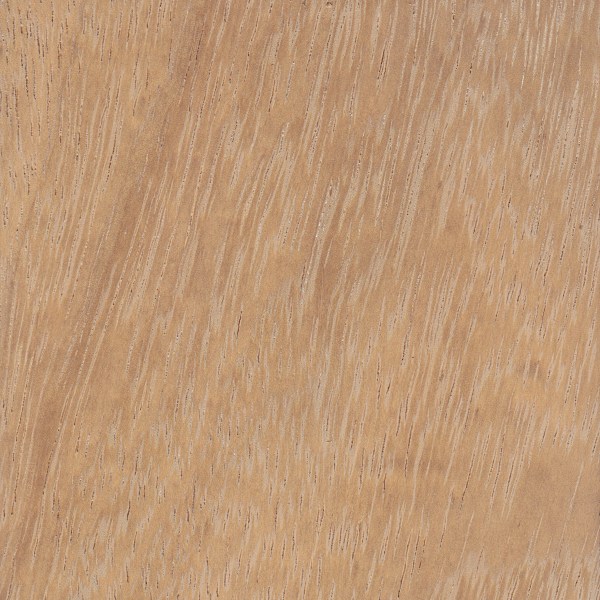
- Kind:
- Lumber
- Category:
- Hard wood
- Scientific Name:
- Milicia excelsa, M. regia (syn. Chlorophora excelsa, C. regia)
- Common Names:
- Odoum, Odum
- Distribution:
- Tropical Africa.
- Average Density:
- 0.68
- General Characteristics:
- Heartwood is usually a yellow to golden or medium brown, with color tending to darken over time. Iroko has a medium to coarse texture, with open pores and an interlocked grain.
- Work Properties:
- Generally easy to work, with the exception of its interlocked grain, which may cause some tearout during surfacing operations. Also, deposits of calcium carbonate are sometimes present, which can have a significant dulling effect on cutters. Iroko glues and finishes well.
- Durability:
- Iroko is very durable, and is resistant to both rot and insect attack; it's sometimes used as a substitute for Teak.
- Usage:
- Given the high prices of genuine Teak, Iroko could be considered a low-cost alternative. The wood is stable, durable, and has an overall look that somewhat resembles Teak. Some common uses for Iroko include: veneer, flooring, furniture, cabinetry, boatbuilding, turned items, and other small specialty wood items.
- Zone:
- Tropical
Jatoba :
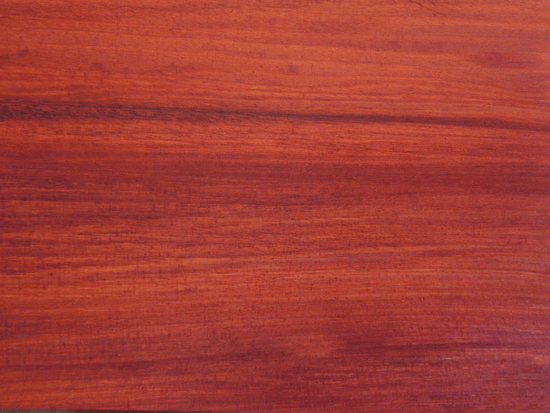
- Kind:
- Lumber
- Category:
- Hard wood
- Scientific Name:
- Hymenaea courbaril L.
- Common Names:
- Rode lokus (Surinam), Algarrobo (Spanish America), Jatahy, Jatoba (Brazil).
- Distribution:
- Southern Mexico, throughout Central America and the West Indies to northern Brazil, Bolivia, and Peru. The tree's best development is on ridges or slopes and high riverbanks.
- Average Density:
- 0.94
- General Characteristics:
- Heartwood is salmon red to orange brown when fresh, becoming russet to reddish brown when seasoned; often marked with dark streaks. Sapwood is usually wide; white, gray, or pinkish. Texture is medium to rather coarse; grain mostly interlocked; golden luster; without distinctive odor or taste.
- Work Properties:
- The wood is moderately difficult to saw and machine largely because of its high density, but except in planing it can be machined to a smooth surface. The wood is somewhat difficult to plane because of the interlocked grain. It is easy to glue and finish satisfactorily; steam-bending properties comparable to white oak.
- Durability:
- Laboratory evaluations rate the wood very resistant to brown-rot and white-rot fungi; actual field exposure trials also rate the wood as very durable. Heartwood is also rated very resistant to dry-wood termites; little resistance to marine borers.
- Usage:
- Tool handles and other applications where good shock resistance is needed, steam-bent parts, flooring, turnery, furniture and cabinet work, railroad crossties, tree-nails, gear cogs, wheel rims, and other specialty items. Tree exudes a rosin-like gum known commercially as South American copal. Seed pods contain an edible pulp.
- Zone:
- Tropical
Kossipo :
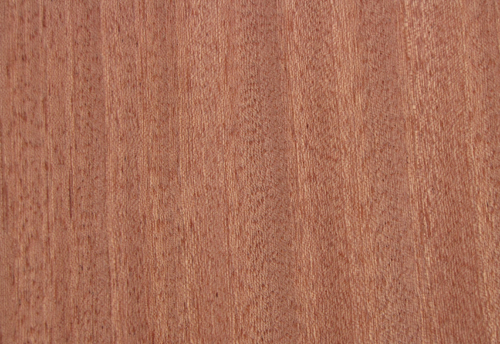
- Kind:
- Lumber
- Category:
- Hard wood
- Scientific Name:
- Entandrophragma candollei
- Common Names:
- Omu (Nigeria), Candollei (Ghana).
- Distribution:
- West Africa to Angola and the Congo region; in evergreen, moist, and transitional formations.
- Average Density:
- 0.69
- General Characteristics:
- Heartwood dull brown or purple brown and clearly demarcated from the whitish to pale brown sapwood. Texture rather coarse; grain generally interlocked; without distinctive odor or taste. This is the only species of Entandrophragma that is reported to contain silica.
- Work Properties:
- Rather difficult to saw, works readily with hand and machine tools, tends to tear interlocked grain, polishes and finishes well.
- Durability:
- Heartwood moderately durable and moderately resistant to termite attack
- Usage:
- Joinery, furniture and cabinet work, flooring, decorative veneers, plywood, boat construction.
- Zone:
- Tropical
Koto:
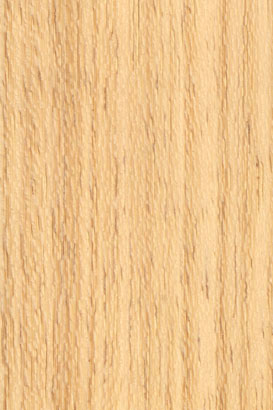
- Kind:
- Lumber
- Category:
- Hard wood
- Scientific Name:
- Pterygota macrocarpa K. Schum.
- Common Names:
- Okyere (Ghana), Koto (Ivory Coast)
- Distribution:
- Common in tropical evergreen and mixed deciduous forests of West Africa.
- Average Density:
- 0.59
- General Characteristics:
- Wood pale yellow to a creamy white with little differentiation between sapwood and heartwood. Texture rather coarse; grain straight to interlocked; green material has an unpleasant smell which disappears on drying; high rays give a conspicuous flecked figure; commonly with small knot.
- Work Properties:
- Works fairly easily with hand and machine tools, a cutting angle of 20 degrees is suggested to reduce tearing of interlocked grain in planing, glues and nails satisfactorily, peels and slices into veneers satisfactorily.
- Durability:
- Heartwood is not durable and is liable to termite attack; sapwood is liable to powder-post beetle attack. Logs are prone to stain and insect attack requiring rapid removal from the forest or a chemical treatment.
- Usage:
- Furniture components, joinery, general carpentry, boxes and crates, plywood.
- Zone:
- Tropical
Makore :
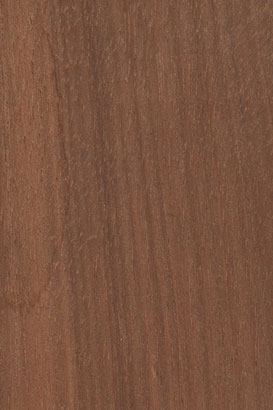
- Kind:
- Lumber
- Category:
- Hard wood
- Scientific Name:
- Tieghemella heckelii Pierre
- Common Names:
- (T. heckelii) Baku (Ghana), Makore (Ivory Coast); (T. africana) Douka, Ukola (Gabon).
- Distribution:
- Both species together are found from Sierra Leone to Cameroon, Gabon, and south to Cabinda; widely distributed in the high rain forests.
- Average Density:
- 0.69
- General Characteristics:
- Heartwood pink to pink- or red brown; sapwood 2 to 3 in. wide, whitish or light pink, clearly demarcated. Texture fine to medium; grain generally straight; lustrous; sometimes with an attractive moire figure. Liable to stain in contact with iron when damp.
- Work Properties:
- A high silica content causes blunting of cutting edges, particularly in dry wood; works reasonably well with hand and machine tools, good veneering properties, finishes well, good gluing properties. Fine dust may irritate the nose and throat or cause dermatitis.
- Durability:
- Heartwood is highly durable and resistant to termite attack; sapwood liable to powder-post beetle attack.
- Usage:
- Furniture, cabinetwork, joinery, decorative veneers, paneling, boatbuilding, flooring, turnery, marine plywood.
- Zone:
- Tropical
Meranti :
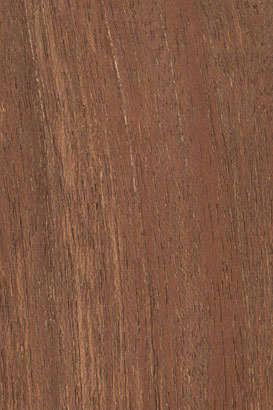
- Kind:
- Lumber
- Category:
- Hard wood
- Scientific Name:
- Shorea curtisii Dyer ex King
- Common Names:
- Red Seraya (Sabah), Meranti Merah (Indonesia)
- Distribution:
- Malay Peninsula, Indonesia, the Philippines, as well as Sabah and Sarawak, usually at low altitudes on well-drained soils.
- Average Density:
- 0.6
- General Characteristics:
- Heartwood varies from almost white to pale pink to dark red, or pale brown to deep brown; sapwood lighter usually with a grayish tinge, distinct. Grain usually interlocked, sometimes somewhat straight; texture coarse; slightly lustrous; usually without characteristic odor or taste.
- Work Properties:
- Easy to work with both hand and machine tools; nailing and gluing are satisfactory; takes a good finish, resin and oil exudation is not a problem.
- Durability:
- Heartwood is generally rated as non-durable in ground contact and is susceptible to dry-wood and subterranean termite attack; sapwood is liable to powder-post beetle attack.
- Usage:
- Light structural work, furniture components, joinery, plywood, cabinetwork, flooring, concrete form work, a general utility wood.
- Zone:
- Tropical
Merbau :
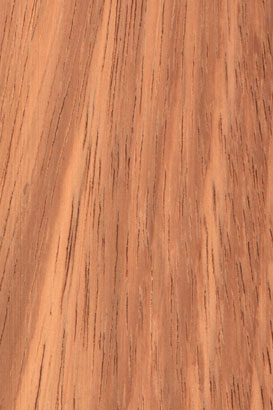
- Kind:
- Lumber
- Category:
- Hard wood
- Scientific Name:
- Intsia bijuga (Colebr.) O. Ktze
- Common Names:
- Tat-talun (Burma), Lumpha, Lumpho (Thailand), Kwila (New Guinea Vesi (Fiji Islands), Ipil (Philippines), Merbau (Malaya).
- Distribution:
- Indo-Malayan region, Indonesia, Philippines, and many of the western Pacific islands as well as Australia. May be locally common in lowland forests, transition zones behind mangroves.
- Average Density:
- 0.83
- General Characteristics:
- Heartwood yellowish to orange brown when freshly cut, turning brown or dark red brown on exposure; sapwood pale yellow to light buff, sharply demarcated from the heartwood. Texture rather coarse; grain straight to interlocked or wavy; luster variable; has a characteristic odor when dry material is worked, and an astringent taste.
- Work Properties:
- Rather difficult to see because of gumming of teeth and dulling of cutting edges, dresses smoothly in most operations, and finishes well. Stains black in the presence of iron and moisture.
- Durability:
- Heartwood has an average service life of 6 years in Malayan stake tests but is generally reputed to have good durability; highly resistant to termite attack. Sapwood is prone to powder-post beetle attack.
- Usage:
- Flooring, furniture, paneling, fine joinery, decorative turnery, cabinetmaking, musical instruments, specialty items. The wood is also a dye source.
- Zone:
- Tropical
Movinge :
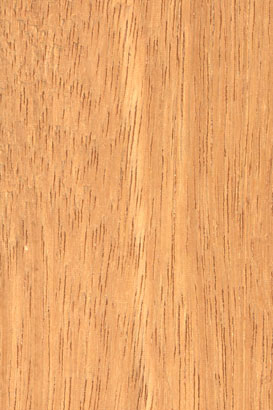
- Kind:
- Lumber
- Category:
- Hard wood
- Scientific Name:
- Distemonanthus benthamianus Baill.
- Common Names:
- Ayan. Movingui (Gabon), Barre (Ivory Coast), Bonsamdua (Ghana), Eyen (Cameroon), Ayanran (Nigeria).
- Distribution:
- Widely but sparsely distributed throughout the high forests of West Africa, mainly in Cameroon, Ghana, and Nigeria.
- Average Density:
- 0.73
- General Characteristics:
- Heartwood yellowish to yellow brown, sometimes with dark streaking; sapwood narrow, whitish or straw colored, fairly distinct. Texture fine grain often interlocked, sometimes wavy; lustrous; some logs produce a decorative figure; may contain up to 1.3% silica; contains a yellow extractive that may stain fabrics if moistened.
- Work Properties:
- Works fairly readily with machine and hand tools. Blunting effect on cutters varies depending on silica content. Gum buildup on saws causes overheating. Takes a good finish, good gluing properties, easy to peel into veneer moderately good steam-bending properties.
- Durability:
- Heartwood is rated as moderately durable and moderately resistant to termite attack.
- Usage:
- Cabinetwork, joinery, flooring, decorative veneers. Suggested as an oak alternative.
- Zone:
- Tropical
Niangon:
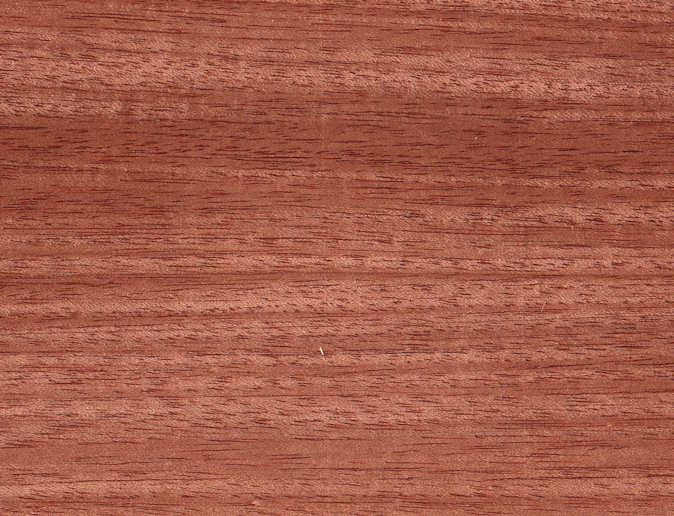
- Kind:
- Lumber
- Category:
- Hard wood
- Scientific Name:
- Heritiera Utilis.
- Common Names:
- Anguekong, kwaeduma, Nyankom, Ogoue
- Distribution:
- Gabon, Sierra Leone, Cote d Ivoire (Ivory Coast), Liberia
- Average Density:
- 0.65
- General Characteristics:
- This beautiful wood is also called Bagi in some parts of the world. The Heartwood is pale pink- to red brown, darkening on exposure to light and sapwood whitish, not always clearly demarcated. Grain generally interlocked, sometimes wavy, texture somewhat coarse, luster medium to low, greasy feel, figured on radial surfaces due to high wood rays.
- Work Properties:
- Works rather easily with hand and machine tools with only moderate blunting, a cutting angle of 15 degrees is suggested when planing to prevent tearing, excess gum may cause finishing problems, good gluing properties.
- Durability:
- Heartwood is rated as durable and extremely resistant and can be used in Furniture components, carpentry and joinery, boatbuilding, greenhouses.
- Usage:
- Sliced veneer, Cabinetwork, current furniture, exterior and interior joinery, exterior and interior paneling, Flooring, Planking, deck, Moulding, Veneer for back and face of plywood, Light carpentry, Shingles
- Zone:
- Tropical
Okoume :
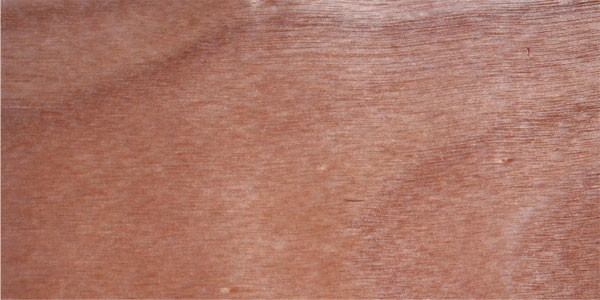
- Kind:
- Lumber
- Category:
- Hard wood
- Scientific Name:
- Aucoumea klaineana Pierre
- Common Names:
- Gaboon (U.K.), Angouma, Loukoumi, N'Koumi (Gabon).
- Distribution:
- Confined to Gabon, Rio Muni, and Congo-Brazzaville; rather common, and extensively planted within its natural range
- Average Density:
- 0.44
- General Characteristics:
- Heartwood salmon pink to light pinkish brown; sapwood narrow, whitish or pale gray, not clearly demarcated from heartwood. Texture medium, grain straight, shallowly interlocked, sometimes wavy; sometimes lustrous; without characteristic odor or taste. Silica content of about 0.12 to 0.16% is reported.
- Work Properties:
- Saw teeth blunt rather quickly due to the silica content; machined surfaces are somewhat wooly but can be worked to a good finish; glues and nails well; easy to peel into veneer, bolts generally heated.
- Durability:
- Heartwood is not resistant to attack by decay fungi and is susceptible to termite attack.
- Usage:
- Plywood, furniture components, joinery, paneling, blockboard, particleboard, light construction.
- Zone:
- Tropical
Padouk :

- Kind:
- Lumber
- Category:
- Hard wood
- Scientific Name:
- Pterocarpus soyauxii
- Common Names:
- Mbe, Mbil (Cameroon), Ngula, Bosulu (Zaire).
- Distribution:
- Central and tropical West Africa; common in dense equatorial rain forests, often in small groups.
- Average Density:
- 0.86
- General Characteristics:
- Heartwood vivid red when freshly cut darkening to a purple brown on exposure; sapwood 4 to 8 in. wide, whitish to brown yellow, distinct. Texture coarse; grain straight to interlocked; lustrous; faint aromatic scent when freshly cut. Sawdust may cause respiratory problems.
- Work Properties:
- Saws well but requires slow feed, easy to machine but with some tearing of interlocked grain, takes a good finish, glues easily and holds nails and screws satisfactorily.
- Durability:
- Heartwood is very durable and very resistant to termite attack. Excellent weathering properties.
- Usage:
- Fine joinery, fancy turnery, carvings, flooring, decorative veneer, tool and knife handles
- Zone:
- Tropical
Sapelli :
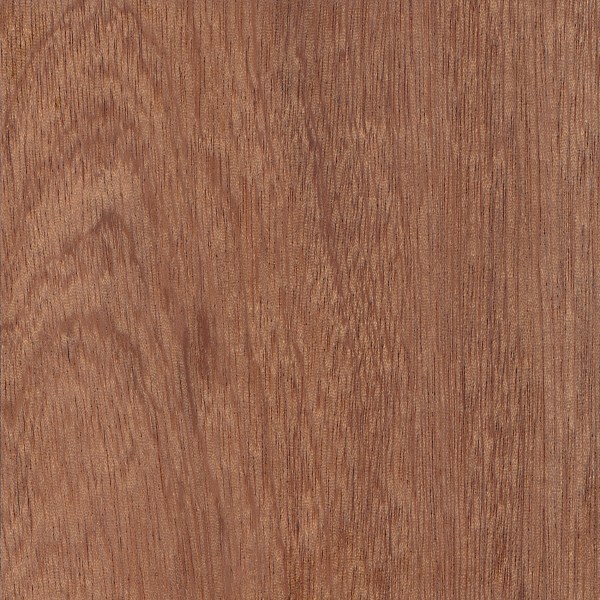
- Kind:
- Lumber
- Category:
- Hard wood
- Scientific Name:
- Entandrophragma cylindricum
- Common Names:
- Aboudikro (Ivory Coast), Penkowa (Ghana), Myuvu (Uganda), Sapelli (Cameroon), Libuyu (Zaire).
- Distribution:
- Ranging from the Ivory Coast to the Cameroons and eastward through Zaire to Uganda. Occurs in evergreen, deciduous, and transitional forest formation.
- Average Density:
- 0.69
- General Characteristics:
- Heartwood a medium to fairly dark reddish brown or purplish brown; sapwood whitish or pale yellow, distinct. Texture rather fine; grain interlocked, sometimes wavy, producing a narrow, uniform, roe figure on quartered surfaces; lustrous; without a distinctive taste but with a cedarlike scent.
- Work Properties:
- Works fairly well with hand and machine tools, tends to tear interlocked grain in planing, saws easily, finishes well, good gluing and nailing properties, satisfactory peeling and slicing
- Durability:
- Heartwood is moderately durable, resistant to termite attack variables. Sapwood is liable to powder-post beetle attack.
- Usage:
- Furniture and cabinet work, decorative veneers, plywood, joinery, flooring, paneling.
- Zone:
- Tropical
Sipo :
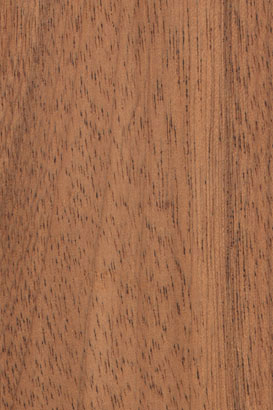
- Kind:
- Lumber
- Category:
- Hard wood
- Scientific Name:
- Entandrophragma utile Sprague
- Common Names:
- Efuodwe (Ghana), Sipo (ivory Coast).
- Distribution:
- Principally from West and Central Africa. Occurs in moist deciduous high forests, dry subtypes, and transitional formations. Rather abundant in the Ivory Coast.
- Average Density:
- 0.62
- General Characteristics:
- Heartwood is fairly uniform red- or purple brown; well demarcated from the light brown sapwood. Texture medium; grain interlocked and rather irregular, has a less uniform stripe figure than sapele; has a faint cedarlike scent. Timber is corrosive to metals.
- Work Properties:
- Works fairly easily with hand and machine tools, interlocked grain may cause tearing in planing and shaping, finishes well, glues and nails easily.
- Durability:
- Heartwood is moderately resistant to attack by decay fungi and termites. Sapwood is liable to attack by powder-post beetles.
- Usage:
- Furniture and cabinet work, joinery, decorative veneers and plywood, boat construction.
- Zone:
- Tropical
Spanish Cedar :

- Kind:
- Lumber
- Category:
- Soft Wood
- Scientific Name:
- Cedro, Cedrella Odorata
- Common Names:
- Cedro (Central and South America)
- Distribution:
- Cedrela occurs from Mexico to Argentina and is found in all countries except Chile. Trees make their best growth on rich, well-drained humid sites but may also compete favorably on drier hillsides; intolerant of water- logged locations.
- Average Density:
- 0.46
- General Characteristics:
- Heartwood pinkish- to reddish brown when freshly cut, becoming red or dark reddish brown, sometimes with a purplish tinge, after exposure; sharply to rather poorly demarcated from the pinkish to white sapwood. Grain usually straight, sometimes interlocked; texture rather fine and uniform to coarse and uneven; luster medium to high and golden; distinctive cedary odor usually pronounced, some specimens with bitter taste.
- Work Properties:
- Cedro is easy to work with hand and machine tools but somewhat difficult to bore cleanly. Easy to cut into veneer but with some tendency for wooly surfaces to occur; good nailing and gluing properties; stains and finishes well but gums and oils sometimes are a problem in polishing.
- Durability:
- Heartwood is rated as durable but there is some variability within species; resistant to both subterranean and dry-wood termites. Low resistance to attack by marine borers. Wood has excellent weathering characteristics.
- Usage:
- Wood is favored for millwork, cabinets, fine furniture, musical instruments, boat building, patterns, sliced- and rotary-cut veneer, decorative and utility plywoods, cigar wrappers, and cigar boxes. Volatile oils may restrict use for some applications (e.g., clock cases).
- Zone:
- Tropical
Tiama :
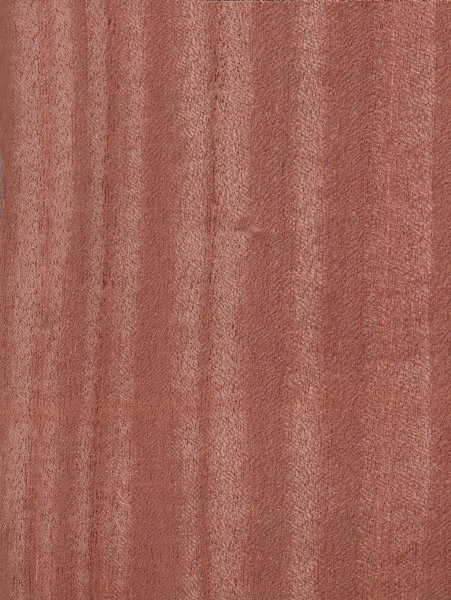
- Kind:
- Lumber
- Category:
- Hard wood
- Scientific Name:
- Entandrophragma angolense C.D.C.
- Common Names:
- Tiama (ivory Coast), Edinam (Ghana)
- Distribution:
- West, Central, and East Africa; occurs in rainforests, deciduous forests, and transitional formations. Coppices freely at the pole stage.
- Average Density:
- 0.55
- General Characteristics:
- Heartwood pink brown or a dull uniform red, usually darkening on exposure to a deep red brown; sapwood creamy white or pale pink, up to 4 in. wide, sometimes not sharply demarcated. Grain interlocked, producing rather broad stripes; texture medium to rather coarse; without taste and almost without odor.
- Work Properties:
- Works rather easily with hand and machine tools, but there is tearing of interlocked grain, otherwise a good finish is obtained in most operations. Good gluing properties.
- Durability:
- Heartwood is rated as moderately durable; termite resistance is variable. Sapwood liable to attack by powder-post beetle
- Usage:
- Furniture, joinery, cabinetmaking, boat construction, decorative veneers and plywood.
- Zone:
- Tropical
Wawa :
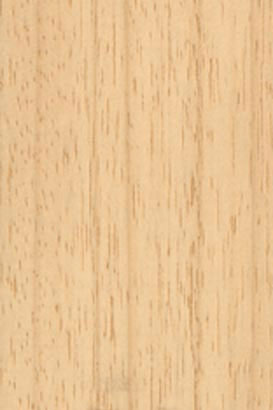
- Kind:
- Lumber
- Category:
- Hard wood
- Scientific Name:
- Triplochiton scleroxylon K. Schum.
- Common Names:
- Arere, Obeche (Nigeria), Samba (Ivory Coast), Ayous (Cameroon), Wawa (Ghana), Abachi (Germany, Holland).
- Distribution:
- Widely distributed in tropical West Africa from Guinea to Cameroon; predominantly along waterways and on abandoned farms in the transition zone between the humid evergreen and semideciduous forests.
- Average Density:
- 0.38
- General Characteristics:
- Timber whitish to pale straw with no difference between heartwood and sapwood. Texture medium to coarse; grain typically interlocked, giving a striped figure; lustrous; has an unpleasant smell when green but usually does not persist after drying.
- Work Properties:
- Works very easily with hand and machine tools but sharp edges are needed for a smooth finish, veneers easily, good gluing and nailing properties.
- Durability:
- Heartwood is not durable and liable to termite and other insect attack; sapwood is prone to powder-post beetle attack. Logs must be extracted from the forest and converted rapidly to avoid deterioration by fungi and insects.
- Usage:
- Furniture components, plywood, joinery, millwork, boxes and crates, blockboard, particle and fiberboard, patternmaking, artificial limbs.
- Zone:
- Tropical
Wenge :
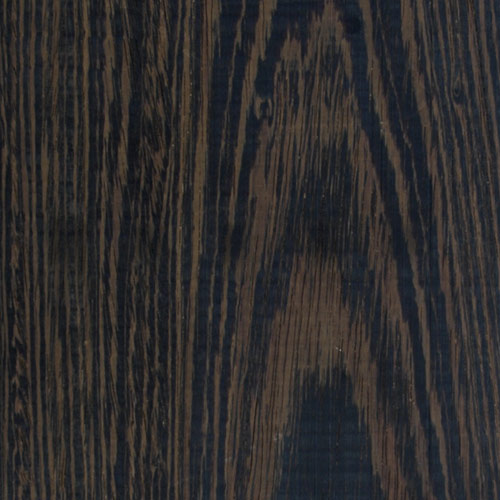
- Kind:
- Lumber
- Category:
- Hard wood
- Scientific Name:
- Millettia laurentii De Wild
- Common Names:
- Wenge (Zaire), Awong (Cameroon).
- Distribution:
- Southern regions of Tanzania and Mozambique, found in open forests. Wenge occurs in the Congo region in periodically inundated swampy forests.
- Average Density:
- 0.87
- General Characteristics:
- Heartwood dark brown to almost black with alternate layers of light and dark tissue forming a decorative figure; sapwood yellowish white, clearly demarcated. Texture rather coarse; grain straight.
- Work Properties:
- Sawing and machining is somewhat difficult, rapid blunting of cutting edges occurs, turns well, and is difficult to glue if resinous.
- Durability:
- Heartwood is rated as very durable and resistant to termite attack.
- Usage:
- Parquet or strip flooring, joinery, general construction, specialty items. Wenge is used as a hickory substitute in sporting goods, also for decorative veneer.
- Zone:
- Tropical
Yaya - Golden Wenge :
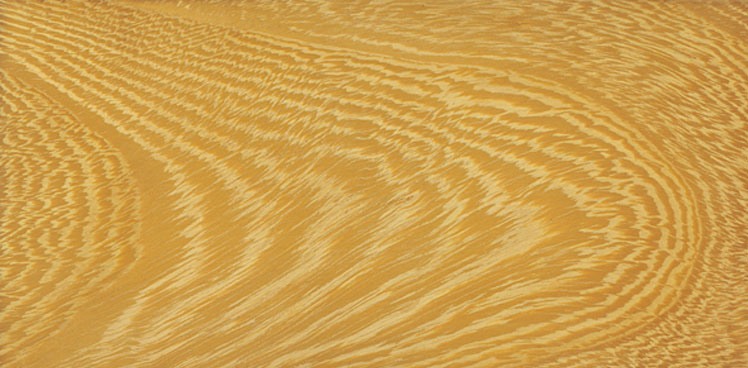
- Kind:
- Lumber
- Category:
- Hard wood
- Scientific Name:
- Amphimas pterocarpioides
- Common Names:
- Asanfran, Bliagl, Bokanga, Edjin, Edjin edzil, Edzil, Edzui, Lati, Muizi, Ogiya, Va tue, Vahn chu
- Distribution:
- Angola, Cameroon, Congo, Equatorial Guinea, Gabon, Ghana, Ivory Coast, Nigeria, Togo, Zaire
- Average Density:
- 0.77
- General Characteristics:
- The sapwood is yellowish white or pale-brown, and is sharply demarcated from the heartwood.The heartwood is initially orange and darkens to orange-brown upon exposure.The wood is straight-grained. Ripple marks are often present.The wood is moderately coarse in texture.There is no distinct odor or taste.The timber is reported to be dimensionally stable after seasoning, and holds its shape well after manufacture
- Work Properties:
- The wood is difficult to saw because of its high density and toughness.The material is reported to work with difficulty, but it can be planed to a smooth surface.The material is reported to respond well to turning.The wood moulds well but it requires very sharp cutting edges.The wood is difficult to bore because it is very hard and tough.Very sharp cutting edges are required for best results.Carving is reported to be difficult because the wood is hard and tough.The wood has good gluing properties.Pre-boring is necessary to prevent splitting.Screwing is reported to require pre-boring.Sanding characteristics are reported to be very good, and sanded surface are clean and smooth.The wood has good polishing characteristics.The material is reported to take stains well.Varnishing properties are rated as satisfactory.Painting properties are reported to be very good.Response to hand tools is reported to be poor.
- Durability:
- The wood is reported to have moderate resistance to decay, but is susceptible to attack by powder post or common furniture beetle.Resistance to ImpregnationThe heartwood responds very poorly to preservative treatment, but the sapwood is moderately responsive.
- Usage:
- Domestic flooring, Exterior trim & siding, Exterior uses, Factory flooring, Figured veneer, Flooring, Furniture components, Furniture squares or stock, Interior construction, Interior trim, Light construction, Millwork, Mouldings, Office furniture, Paneling , Parquet flooring, Railroad ties, Shakes, Sheathing, Shingles, Siding, Stair rails, Stairworks, Sub-flooring, Trimming, Veneer, Building materials, Cabinetmaking, Ceiling, Crossties, Decorative veneer
- Zone:
- Tropical
Zebrano :
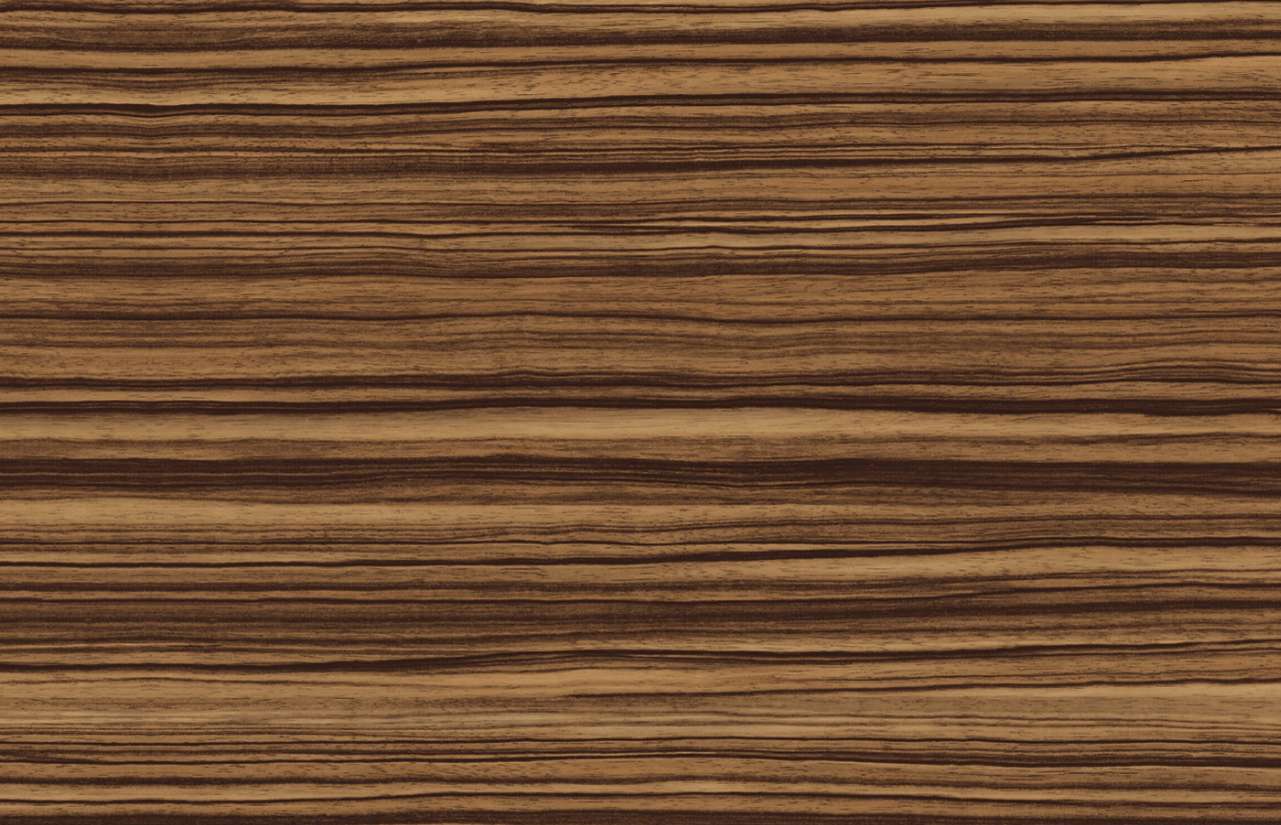
- Kind:
- Lumber
- Category:
- Hard wood
- Scientific Name:
- Microberlinia brazzavillensis A. Chev.
- Common Names:
- Zingana (Gabon), Allen ele (Cameroon).
- Distribution:
- West Africa, mainly in Gabon and Cameroon, gregarious, sometimes in pure stands along riverbanks.
- Average Density:
- 0.79
- General Characteristics:
- Heartwood pale yellow brown with narrow darker streaks, striping pattern varies considerably; sapwood white up to 4 in. wide, distinct. Texture medium to coarse; grain usually wavy or interlocked; lustrous; unpleasant odor disappears after drying.
- Work Properties:
- Saws fairly well, a clean smooth finish is sometimes difficult to obtain with machine or hand planing, tearing of interlocked grain; good gluing properties, veneers need careful handling to avoid cracking.
- Durability:
- Heartwood is durable and resistant to termite attack.
- Usage:
- Decorative veneers, turnery. Because of high toughness, used in ski manufacture, tool handles, etc.
- Zone:
- Tropical
